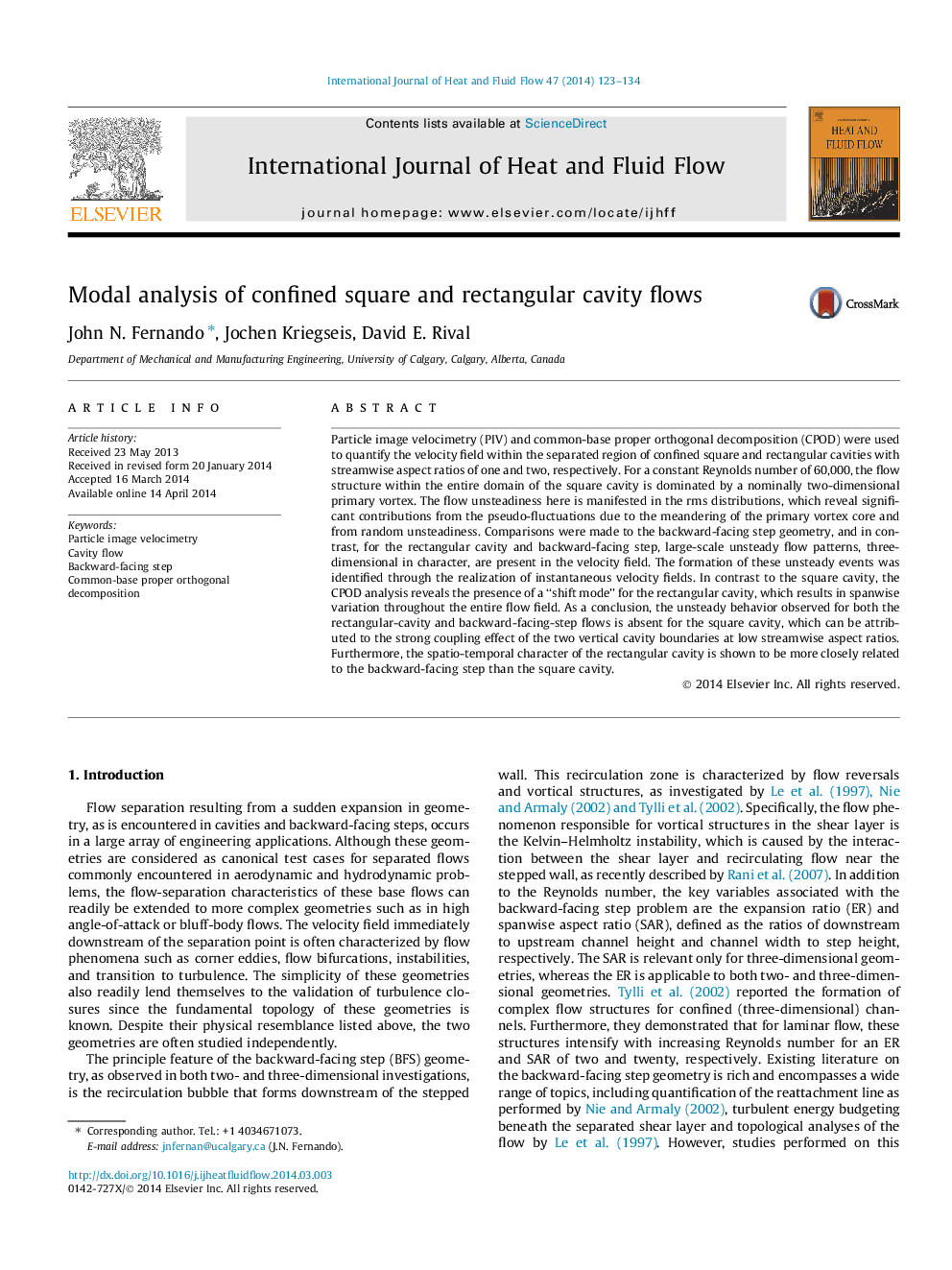| Article ID | Journal | Published Year | Pages | File Type |
|---|---|---|---|---|
| 655111 | International Journal of Heat and Fluid Flow | 2014 | 12 Pages |
Abstract
Particle image velocimetry (PIV) and common-base proper orthogonal decomposition (CPOD) were used to quantify the velocity field within the separated region of confined square and rectangular cavities with streamwise aspect ratios of one and two, respectively. For a constant Reynolds number of 60,000, the flow structure within the entire domain of the square cavity is dominated by a nominally two-dimensional primary vortex. The flow unsteadiness here is manifested in the rms distributions, which reveal significant contributions from the pseudo-fluctuations due to the meandering of the primary vortex core and from random unsteadiness. Comparisons were made to the backward-facing step geometry, and in contrast, for the rectangular cavity and backward-facing step, large-scale unsteady flow patterns, three-dimensional in character, are present in the velocity field. The formation of these unsteady events was identified through the realization of instantaneous velocity fields. In contrast to the square cavity, the CPOD analysis reveals the presence of a “shift mode” for the rectangular cavity, which results in spanwise variation throughout the entire flow field. As a conclusion, the unsteady behavior observed for both the rectangular-cavity and backward-facing-step flows is absent for the square cavity, which can be attributed to the strong coupling effect of the two vertical cavity boundaries at low streamwise aspect ratios. Furthermore, the spatio-temporal character of the rectangular cavity is shown to be more closely related to the backward-facing step than the square cavity.
Related Topics
Physical Sciences and Engineering
Chemical Engineering
Fluid Flow and Transfer Processes
Authors
John N. Fernando, Jochen Kriegseis, David E. Rival,
